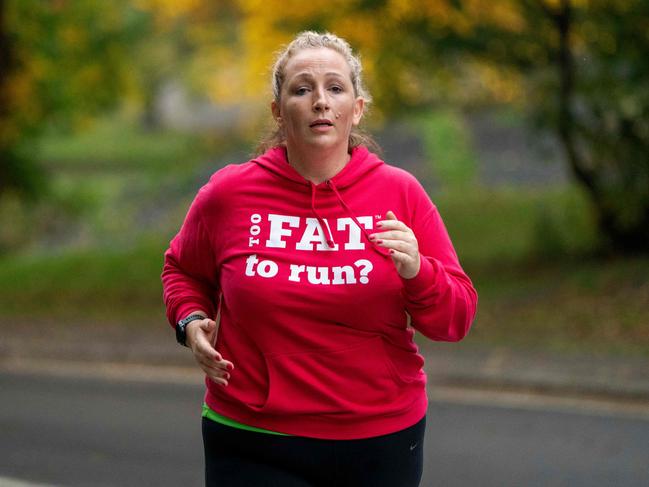Can you be fat but healthy? Experts say yes
A global commission this week suggested we change the way we approach the diagnosis of obesity. Should you be worried about your own BMI and fitness?

Can you carry extra pounds yet still be considered fit and healthy? It’s a question that has been posed by doctors for years. This week a group of scientists have added to the debate, proposing a “radical overhaul” to how obesity is diagnosed worldwide. In a Lancet commission they recommended that doctors distinguish between those who are sick with “clinical obesity” and those who are overweight but also healthy. Relying on body mass index (BMI, which measures height and weight to calculate a person’s body fat) to define obesity is “ineffective” because it does not provide information about a person’s health.
The experts recommended doctors should also look at a person’s waist-to-hip or waist-to-height ratios, as well as for symptoms and signs of illness. Professor Francesco Rubino of King’s College London, the commission chairman, said: “A blanket definition of obesity as a disease can result in overdiagnosis and unwarranted use of medications and surgical procedures, with potential harm to the individual and staggering costs for society.”
He added: “There is no question about some people who are today classified as having obesity by BMI - they might be athletes, they play sports, they’re very active, they might have very strong bones. Saying that those people have obesity, and then classifying them as having a disease, would be an overdiagnosis.”
Endorsed by the Royal College of Physicians, the recommendations are good news for someone who hits the gym, swims or runs despite extra body baggage and elevated readings on the scales. It means they may not be told to lose weight or be warned they are particularly in danger of a range of illnesses including type 2 diabetes and high blood pressure.
It’s not the first time doctors have pointed out that exercising can also override many of the adverse health effects of carrying excess body fat. Professor Matthias Bluher, an endocrinologist and a leading researcher in obesity at the University of Leipzig and Helmholtz Centre Munich in Germany, has also suggested you can be living with what the researchers call “metabolically healthy obesity” – that’s fat but fit to you and me – with a BMI that puts you in the obese category (30 and above), yet have few, if any, of the adverse health complications associated with excess weight, which include high blood sugar, high cholesterol, high blood pressure and type 2 diabetes.
According to Bluher, “some populations may be, despite larger amounts of adipose tissue [body fat], more protected” against disease. This “healthy obesity” is most often seen in premenopausal women. It is estimated that about a quarter of middle-aged women and a tenth of middle-aged men in the UK fall into the “fat but fit” category.
It’s also not news to the growing band of plus-size fitness influencers who were already set on proving that you can be curvy and athletic, including Tiffany Croww (@tiffanycroww), who has 316,000 Instagram followers; Mirna Vilario (@themirnavator), who wrote a blog called Fatgirlrunning about her experiences as a larger woman in a world of lean racing machines; and the UK’s @sportybethcf, a plus-size CrossFit training enthusiast, Bethany Robinson, who motivates her 144,000 Instagram followers with mantras such as “Don’t underestimate larger-bodied athletes” and “Health is not a size”. Books including The Fat Girls’ Guide to Marathon Running by Julie Creffield and Bryony Gordon’s Eat, Drink, Run – a memoir of how a self-described “fat bird” completed her first London Marathon – too have proved that stereotypes about size can be wrong.

Dr Mark Homer, an exercise physiologist at Buckinghamshire New University, says the message is not that exercise eradicates all the health risks associated with obesity but rather that staying active benefits people of all sizes. “Body weight is not the main thing to consider when evaluating someone’s health, and exercise will help to improve long and short-term outcomes for most people,” Homer says. “It is better to be fat and fit than thin and unfit.” Slenderness alone is not enough to keep you on the path to lifelong wellbeing. “Your risk of many types of disease won’t be reduced dramatically through weight loss alone,” he says. “A lot of obesity-related illnesses are associated with low physical activity levels and a lack of cardiorespiratory fitness, not just with being overweight in itself.”
Homer says that if you are what might be termed “slim but slack” with your exercise habits you are not immune to disease risks, which will only rise the longer you stay away from the gym. Yet, as for anyone at the opposite end of the weight spectrum, the minute you start exercising the prognosis improves.
“Very quickly, your body’s ability to deliver oxygen and nutrients improves, blood flow is enhanced and stress levels are reduced when you become more active,” Homer says. “Regular exercise helps to counter some of the undesirable side-effects of excess body fat, such as raised cholesterol and blood sugar levels, and, of course, you might shed some weight, which further improves the health outcomes.”
Any kind of activity is helpful, he says, from lifting weights and power walking to circuit training and cycling. And while you might assume that high-impact activities such as running are off the agenda when you are a few pounds over the mark, even they are not necessarily an injury crisis waiting to happen. Our bodies typically absorb two to three times our body weight with each running stride, which sounds like self-inflicted torture if you are overweight, yet extra pounds don’t necessarily equate to maximum shock levels reverberating through the body.
“It is a bit of a misconception that heavier runners are always more prone to impact injuries than lighter counterparts, and it really depends on how someone runs,” says Dr Ceri Diss, a senior lecturer in biomechanics at the University of Roehampton. “Our research has shown that a heavier runner with a more efficient technique who lands quietly with each stride can exert less force through their body than a much lighter runner who slaps the ground loudly with their feet, which shows they are landing with great impact.”
Despite all of this, the “fat but fit” phenomenon is controversial, with even Bluher warning that overweight people who are in good health now may be storing up problems for the future. Compared with healthy people of normal weight, those with “healthy obesity” may still have a 50 per cent increased risk of coronary heart disease and, according to Bluher, “there is still a residual increased risk for those people living with obesity, even with what we would call metabolically healthy obesity”. Losing excess weight will undoubtedly bring added benefits and may further enhance longevity, Homer says, but the bottom line from epidemiological studies is that “increasing physical activity and cardiorespiratory fitness probably matters more than dieting alone for long-term health”.
The Times



